Name Joseph Moxon | Books Mechanick exercises | |
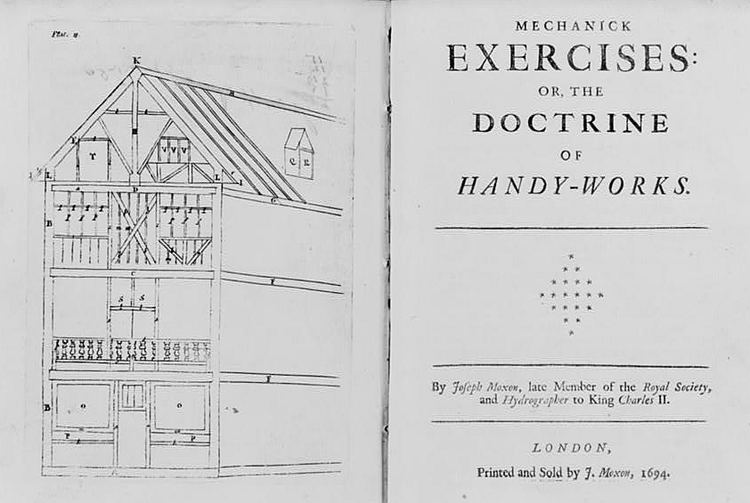 | ||
Born 8 August 1627 ( 1627-08-08 ) Died February 28, 1691, London, United Kingdom | ||
Joseph moxon treadle wheel axle bearing plates and pins
Joseph Moxon (8 August 1627 – February 1691 ), hydrographer to Charles II, was an English printer specialising in mathematical books and maps, a maker of globes and mathematical instruments, and mathematical lexicographer. He produced the first English language dictionary devoted to mathematics, and the first detailed instructional manual for printers. In November 1678, he became the first tradesman to be elected as a Fellow of the Royal Society.
Contents
- Joseph moxon treadle wheel axle bearing plates and pins
- Joseph moxon drill bench on a seventeenth century wood lathe
- Life
- Works
- References

Joseph moxon drill bench on a seventeenth century wood lathe
Life
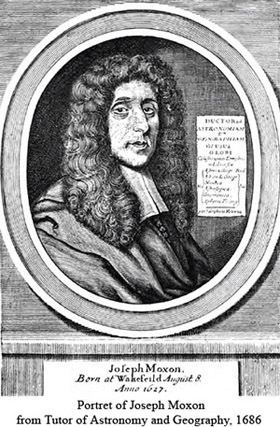
Between the ages of around 9 and 11, Moxon accompanied his father, James Moxon, to Delft and Rotterdam where he was printing English Bibles. It was at this time that Moxon learned the basics of printing. After the First English Civil War the family returned to London and Moxon and his older brother, James, started a printing business which specialized in the publication of Puritan texts, with the notable exception of A Book of Drawing, Limning, Washing or Colouring of Mapps and Prints of 1647 which was produced for Thomas Jenner, a seller of maps.
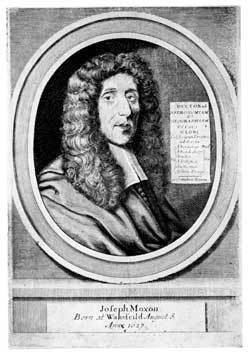
In 1652, Moxon visited Amsterdam and commissioned the engraving of globe-printing plates, and by the end of the year was selling large celestial and terrestrial globes in a new business venture. He specialized in the printing of maps and charts, and in the production of globes, and mathematical instruments made of paper.

In January 1662, he was appointed hydrographer to the King, despite his Puritan background. His shop at this time was on Ludgate Hill; afterwards, in 1683, it was 'on the west side of Fleet Ditch,' but always 'at the sign of Atlas.'. Moxon's Mechanick exercises was published in parts between 1677 and 1684; it was completed in two volumes, the first giving instructions on metalworking, woodworking, brick-laying and sundial-construction and the second (issued 1683-1684) providing a detailed sries of instructions for printers, including typefounding, composition, press-work etc., which have given printing historians much (probably idealised) information on the working practices of hand-press period printing-houses. An annotated edition, edited by Harry Carter and Herbert Davis, was published in 1958 and reprinted with corrections in 1962.
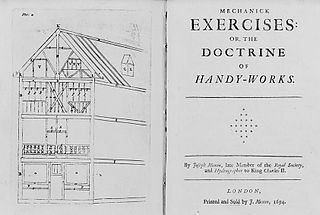
Moxon theorized that the Arctic was ice free, and warmed by twenty-four hours of sunlight in the summer. He also speculated that Arctic ice was created near land, and that if one sailed far enough northwards, one would be free of northern land masses and, subsequently, ice.
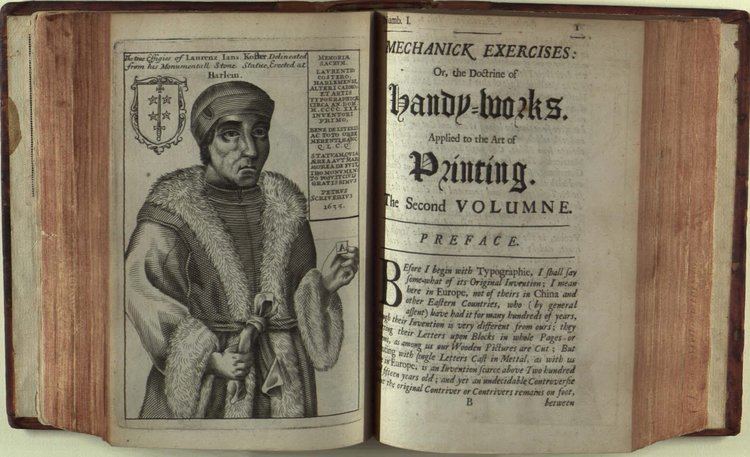
These views led him to believe that the Northwest Passage would be found by sailing near the North Pole. These views later influenced Daines Barrington and Samuel Engel, whose refinement of Moxon's ideas would in turn influence Captain Cook's Third Voyage in search of the Northwest Passage.
